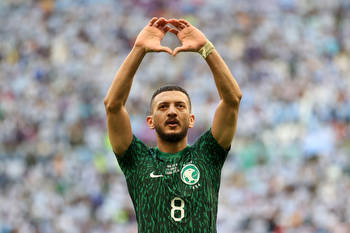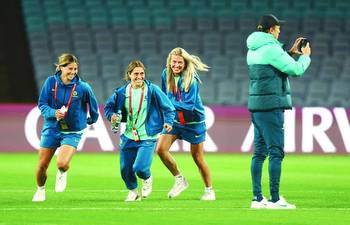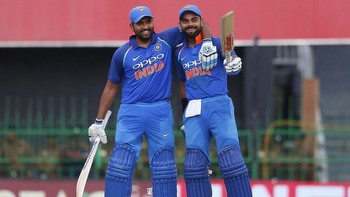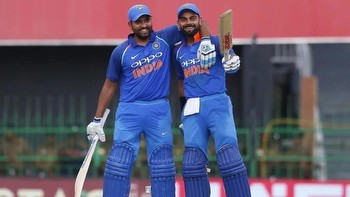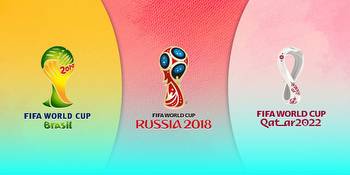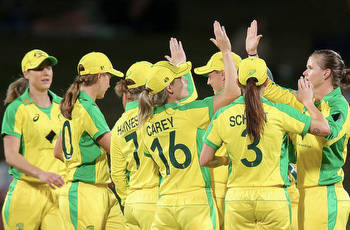but football’s drama will draw the uninitiated in
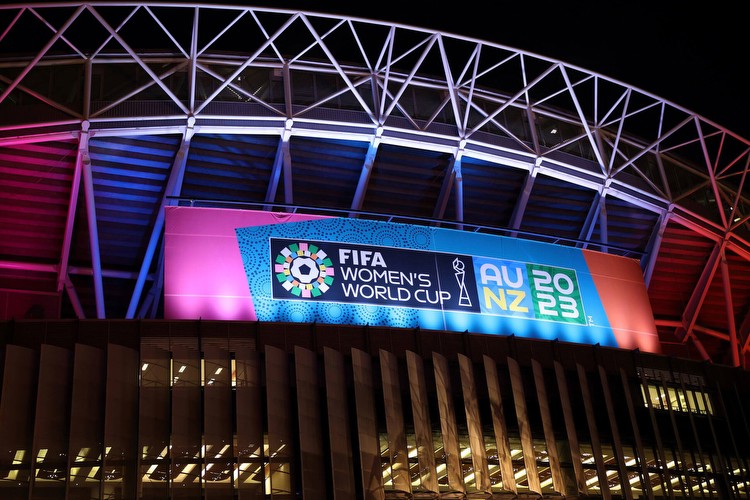
Until the turn of the century, there was a standard format for major international tournaments: one country played host. That was it.
They were sometimes large countries like Brazil, they were sometimes small countries like Denmark. But that was the deal: one country. No one ever considered anything else.
From 2000, things changed. Initially, there was the rise of neighbouring countries jointly hosting tournaments, which made sense as tournaments expanded in size, to ease the demands on the construction of infrastructure and allow more countries to get involved. There was the Netherlands and Belgium hosting Euro 2000, Japan and South Korea hosting World Cup 2002, Austria and Switzerland hosting Euro 2008, and Ukraine and Poland hosting Euro 2012. All fairly simple.
In recent years, though, things have changed enormously. Now, anything goes.
The last two years have been particularly strange, particularly as a Britain-based football journalist. In that time I’ve been to Euro 2020, a cross-continent tournament held in 2021 where I couldn’t actually leave the country because of Covid-19 restrictions. Then came the women’s equivalent, Euro 2022, hosted in the United Kingdom which meant there was no need to leave the country anyway. Next was World Cup 2022, hosted not merely within a single country but effectively within a single city. And then came World Cup 2023, hosted across two countries — and therefore over a whole continent.
There has never been a more varied time to be attending tournaments. Listing all the differences would be a pointless exercise in stating the obvious. But it’s been quite a contrast; in Qatar you could stay in one place for the duration and wake up not knowing what stadium you needed to be at, because all were within an hour away. In Australia and New Zealand, for journalists at least, long flights were the norm.
So here, instead, is what I think has united the four tournaments. It goes against the very thing you’re meant to say after attending events like this. You’re meant to remark on how massive football is, how it’s important in every single corner of the globe, and how it means so much to everyone.
But I’ve been reminded, in various ways, that lots of people aren’t really into football.
This was striking at Euro 2020 because fans largely couldn’t travel abroad to see their team. My clearest memory is attending the Italy vs Spain semi-final at Wembley, and being surrounded by London-based Italians and Spaniards who, from the way they acted beforehand and in the first half, were obviously not regular match-goers.
They looked surprised when everyone stood up for the national anthems, and they didn’t know any of the chants, and they understood the VAR process even less than everyone else.
They didn’t quite get it at first. But by the time the game went into extra time, suddenly they were part of the tifosi. They picked up on the chants. Having not been worried about earlier missed chances, suddenly they had their heads in their hands. It was great to witness; observing the development of their own personal — probably temporary — fandom, and realising that London, despite Brexit, was perhaps still the best place in Europe for this.
Euro 2022 was interesting because, at the start of the tournament, women’s football simply wasn’t that much of a big deal. It was funny to hear of the scramble for tickets for the final because they were readily available for quite a long period.
Attendances were generally good, although there were huge empty sections of stands at some grounds.
It was possible to get the train to Rotherham for France vs Italy and get into conversation with a Rotherham resident who had no idea the tournament was taking place. You could go to Sheffield, stumble upon Sweden supporters marching through the streets to Bramall Lane, and spot baffled observers who presumably thought they were witnessing another Viking invasion. Women’s football will never be that low-key again. If England were to host another tournament, the host stadiums probably won’t include the likes of Leigh Sports Village.
World Cup 2022 was utterly bizarre in almost every way, but if you ignored the World Cup circus — which was surprisingly easy in some parts of Doha — you realised that this wasn’t, by and large, a football-mad place.
There were two distinct types of locals.
There were Qataris, who were aware their country was suddenly the talk of the world, and attended matches in decent numbers. That said, there were scores of empty seats at most group-stage matches, including at Qatar games.
The others were the foreign workers, the majority of whom came from India, Pakistan and Bangladesh. Therefore, the local sport of choice was cricket. I didn’t see anyone kicking a ball around outside of the World Cup, and yet, at weekends, constantly saw games of cricket. With that in mind, Matt Slater’s article about participating in one of those games remains my favourite piece of journalism from the tournament.
While World Cup matches were paused, we found a Qatar cricket match to join
And now, Australia and New Zealand.
It’s worth pointing out, to those uninitiated, that New Zealand and Australia really are quite far from one another. It’s not quite like getting the boat across the Irish Sea to Dublin. Wellington to Brisbane, for example, is a four-hour flight “across the ditch”, as they say here. And that’s without considering the vastness of Australia.
New Zealand was not a football country. In one of Wellington’s many excellent second-hand bookshops, I was alarmed to discover an extensive sport section which had shelves labelled with eight specific sports — none of them football, which was relegated to ‘sports: general’. There were as many books about windsurfing. One title claimed to be about Great New Zealand Footballers but, predictably, was about rugby.
Particularly noticeable in both countries, but more prominent in New Zealand, was that shops in host cities had all been issued with the same design of bunting, which was widely displayed in windows. This generally followed the classic formula — flags of all the competing nations — but every four didn’t display a national flag and, instead, sported a ClipArt football. It clearly needed to be clarified what these 32 countries actually represented, and the sport in which their teams were competing.
On the day before and after a match, it was possible to wander around Wellington and be completely unaware that there was a tournament happening. No one was in replica shirts. Pubs weren’t advertising that they were showing the games — although, once inside, they often were. When looking for somewhere to watch USA vs Portugal, I enquired in one bar whether they were showing the World Cup.
“What, the netball?” came the response.
For all their general disinterest in football, Wellingtonians got into it — in British terms, in the way people get into Eurovision or the Commonwealth Games. Despite largely unpleasant weather in which to be sitting outdoors, the two Saturday night games featured near-full stadiums.
Travelling support was relatively low. But I encountered many young New Zealanders who had adopted one of the nations (Sweden and Japan were particularly popular), dressed up accordingly, and chanted for them in English. My hotel receptionist was of Swedish descent and went along to represent her ancestors. She loved it, helped by Sweden beating Italy 5-0. One woman I spoke to after Japan vs Norway had never been to a football game before, and she really enjoyed it too.
That said, I’m not convinced either will suddenly start supporting Wellington Phoenix. It was a bit like being at that Euro 2020 semi-final again.
Australia was different.
Australians will get interested in any sport on the condition that they have a decent chance of winning. So there was quite a journey throughout this tournament. It started with a feeling of indifference shortly before the tournament. Then there was a wave of interest after the opening day 1-0 victory over Ireland.
But the sudden surge of support, optimism and belief as the Matildas navigated their way past Canada, Denmark and France was striking. This was not, as was the case in Euro 2022, a host nation transferring their passion for men’s football upon their women’s side. This was a country that primarily loves rugby union, rugby league, Aussie Rules and cricket, and they were embracing soccer like never before.
I got talking to the landlord in the Paddo Inn, in the Paddington district of Sydney, who said he unexpectedly found his pub overloaded with punters for the quarter-final against France, to the extent that people were watching through the windows. “Good for business?” I suggested.
“You’re joking,” he responded. “No one bought a drink for the 20 minutes that penalty shootout went on for.”
It remains to be seen whether there is a serious legacy from this tournament in Australia. It is easy to think, in the moment, that something has transformed, but interest can fade remarkably quickly. Prime Minister Anthony Albanese has announced a $200million (£100.7m; $128m) funding injection for women’s sport, although it’s unclear how much will go to soccer.
It is worth remembering how casual, if heartfelt, a lot of support has been for the Matildas, summed up by a letter published in the Sydney Morning Herald the day after the tournament, from an Annemarie Turner from Dapto: “Am I the only new fan of women’s soccer to cheer on Sweden thanks to their yellow strips, only to have my husband chuckle and remind me many times that I was supporting the wrong team?”
In a way, it’s refreshing to be reminded that football isn’t everything. There is a sense that football has simply become too big, too relentless, too ‘important’ in some parts of the world. You suspect that supporters like Turner probably won’t be starting fights with opposition fans in the streets, sending players death threats on social media, or using their club’s newfound wealth to passionately defend countries with bad human rights records.
Football tournaments will continue to get madder. The next men’s World Cup is to be hosted across Canada, the United States and Mexico, an enormous area of land. But it’s not that different from this Women’s World Cup, or Euro 2020 — hosting it over a continent of neighbouring countries.
What will be strange is when countries who aren’t actually neighbours start hosting it together.
Until two months ago, there was a bid to host World Cup 2030 from Egypt, Greece and Saudi Arabia. There is still an active bid from Spain, Portugal, Morocco… and Ukraine. But once you’ve been to a World Cup hosted by nations from two different FIFA confederations, a three-hour flight from one another, and neither of them overwhelmingly football countries, you realise anything is possible.

